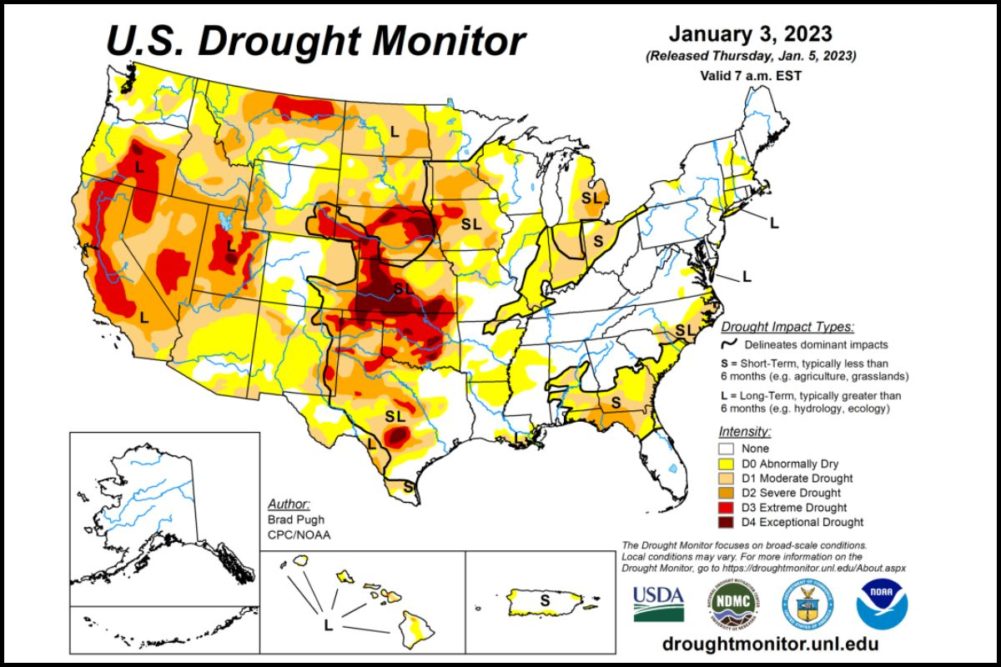KANSAS CITY, MISSOURI, US — Beneficial rainfall as the calendar flipped to a new year improved a still-dire moisture situation in some areas where winter wheat is grown.
The US Department of Agriculture, in its analysis of the Jan. 3 US Drought Monitor, estimated 64% of winter wheat production was within areas experiencing drought, down from 69% in the Department’s appraisal of the Dec. 27 Drought Monitor. Comparing the maps accompanying the reports, it becomes apparent most of the improvement was in the southern and western areas of the soft red winter wheat growing region.
Standing out in the comparison among major winter wheat areas was the tri-state area where Missouri, Illinois and Kentucky converge along the western stretch of the Ohio River. Southern Illinois and southeastern Missouri were in moderate drought in late 2022, but by Jan. 3 were only moderately dry, with some sections of both states and most of western Kentucky no longer indicating drought. Eastern Arkansas along the Mississippi River, considered a minor crop area for soft red winter wheat, improved from moderate drought to abnormally dry in the week.
Significant portions of Indiana, Michigan and Ohio remain in drought. In the latter state, drought was affecting the northwest third of the state, which includes its major production area for winter wheat. But those areas were only in moderate drought, the first of four categories of increasing dryness.
By comparison, hard red winter wheat production areas of the US Plains were in far worse shape than soft wheat areas, with little improvement apparent in the latest week. The overwhelming majority of hard red production areas were in some stage of drought. Exceptions were minor and major crop areas of northeast Texas, a sizable portion of northcentral Kansas split evenly between major and minor crop areas, and minor crop areas of central South Dakota and southern Montana.
The most extensive moisture shortage was seen in the top hard red winter wheat production state of Kansas. The northeastern portion of the state was abnormally dry or in moderate drought. But three-quarters of the state, including the major wheat-growing area in the west, was in extreme or exceptional drought, mostly the latter. Extreme drought areas bled down into Oklahoma where most of the land was in extreme or severe drought. Eastern Texas was in good shape, but the western half, including the panhandle, was in moderate to severe drought with areas of extreme drought. Eastern Colorado’s primary growing areas were mostly in drought, albeit to a lesser extent than Kansas.
To the north, Nebraska was entirely in drought. The southwest, southern panhandle and northeast quadrant were in extreme drought, and the rest of the state was in moderate to severe stages. Wheat areas of South Dakota and Montana were in relatively better shape, ranging from no water shortage in southern Montana to patches of severe drought in southern South Dakota. That was reflected in the USDA pegging the spring wheat areas in drought at 67%, and durum wheat area 80% in drought, both unchanged from the previous week.




